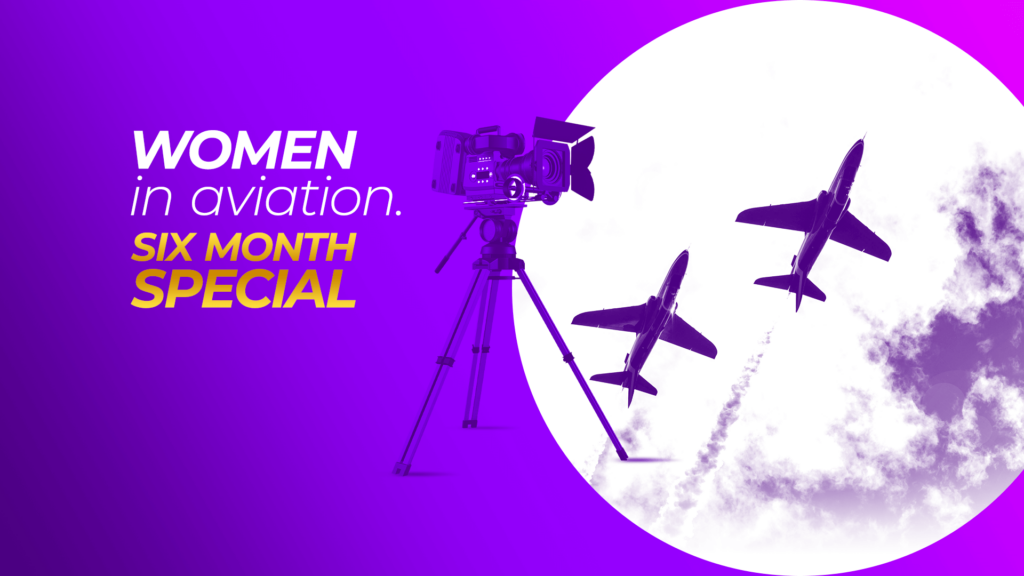In the early 1950s, two women pilots, the American Jacqueline Cochran and her French counterpart Jacqueline Auriol, competed to become the fastest female pilot. From opposite sides of the Atlantic, the two Jacquelines traded records for over a decade.
From the Elysée to the skies
As the daughter-in-law of the French president Vincent Auriol, Jacqueline Auriol was destined for a quiet life experienced by the Parisian bourgeoisie.
But the refinement of the Elysée Palace bored the seasoned sportswoman and art enthusiast. In 1947, she discovered an interest in piloting following a meeting with Colonel Pierre Pouyade, a flying ace from the famous Normandy-Niémen squadron, which served during the Second World War. A year later, she obtained her pilot license and went on to participate in aerial meetings throughout France.
On July 11, 1949, she was invited to the inaugural flight of a seaplane, the S.C.A.N. 30, above the Seine River. The majority of the flight went smoothly. However, as the aircraft flew too low, its hull touched the river at over 160 kilometers per hour. The seaplane was overturned and crashed into the water.
Out of the three people on board, Jacqueline Auriol suffered the worst trauma. She sustained several skull fractures and was left with severe face injuries. But Auriol was resolute in her recovery. After 20 surgeries, which were performed over the span of two years, and an incredible amount of perseverance, she eventually found her way back to the cockpit, where she obtained her military, gliding, and helicopter licenses.
“Planes had taken my face,” she wrote several years after the incident. “The only way to make them pay for it was to tame them completely.”
The mother of the WASPs
Jacqueline Cochran’s induction into the world of aviation is no less peculiar. After pursuing a career as a hairdresser, her life took a turn for the better when, in the early 1930s, she met Floyd Bostwick Odlum, chief of the Hollywood production company RKO. Together, they resolved to create a cosmetics business.
After hitching a ride on a friend’s plane, Cochran decided to learn to fly an aircraft. Her first solo flight ended in a forced landing after sustaining an engine failure. Nonetheless, she obtained her commercial pilot’s license just two years later.
Odlum, whom she married in the meantime, recognized the marketing potential in his wife’s newfound passion. He helped create a cosmetic line, Wings to Beauty, which Jackie promoted by flying her plane.
In September 1939, as the Second World War broke out in Europe, Cochran wrote to Eleanor Roosevelt, the wife of the United States president, asking to create a female unit in the Army Air Forces. Meanwhile, Cochran ferried numerous aircraft from the United States to the European theater of war for the British Air Transport Auxiliary. She became the first woman to cross the Atlantic Ocean on a bomber, a Lockheed Hudson V.
Cochran spent several years lobbying within the US Army Air Forces to prove that women could play a fundamental role in aerial warfare. Eventually, she was granted command of the Women Airforce Service Pilots (WASP) Corps, created in August 1943. Under her supervision, WASP assisted with various missions, including, but not limited to, cargo transport, target towing, and test-flying aircraft after repairs.
The duel of the two Jacqueline
Shortly after recovering from her crash, Jaqueline Auriol decided to beat the record set by Jacqueline Cochran, which was established in December 1947, at 755 kilometers per hour on a piston-engined P-51C Mustang fighter.
Flying a British military jet, the de Havilland Vampire, Auriol broke the record of the world’s fastest woman on May 12, 1951, when she reached a speed of 818 kilometers per hour.
With this record, Auriol threw down the gauntlet to her American rival.
Determined to regain her title, Cochran switched to a jet aircraft and sought the assistance of Chuck Yeager, the first man to break the sound barrier.
On May 18, 1953, onboard her North American F-86 Saber, Cochran broke a historical record and became the first woman to break the sound barrier at 1,050 kilometers per hour.
Auriol followed three months later, flying a Dassault Mystère II C, and was classed as the first European woman to break the sound barrier.
But the duel did not stop there.
In 1955, Cochran, who became vice-president of the International Aeronautical Federation (IAF), announced that the women’s records would be abolished on the following June 1. This would mean that Cochran would remain the world’s officially established fastest woman, having retaken the title at 1,082 kilometers per hour.
On May 31, 1955, just one day before the deadline, Auriol took off aboard a Mystère IV N and reached a record speed of 1,151 kilometers per hour, dethroning Cochran in the nick of time. A year later, the women’s records were reinstated and the competition between Auriol and Cochran continued.
After initially being beaten again by Cochran, who reached 1,262 kilometers per hour on her Northrop T-38 Talon, Auriol became the first woman to reach Mach 2, twice the speed of the sound, onboard a Dassault Mirage III on August 26, 1959.
The competition ended in 1964 when, at age 57, the American reached a speed of 2,097 kilometers per hour in the cockpit of a Lockheed F-104 Starfighter TF- 104G.
Cochran became the first woman president of the IAF from 1958 to 1961. Auriol became the first woman to fly on Concorde as a test pilot.
The figurative dogfight between the two trailblazing female pilots left behind a wealth of world records and an inspiring legacy of passion and determination.
